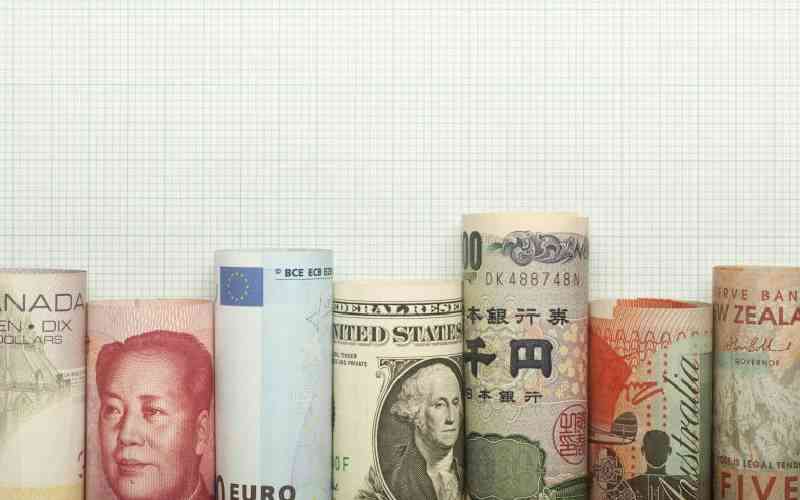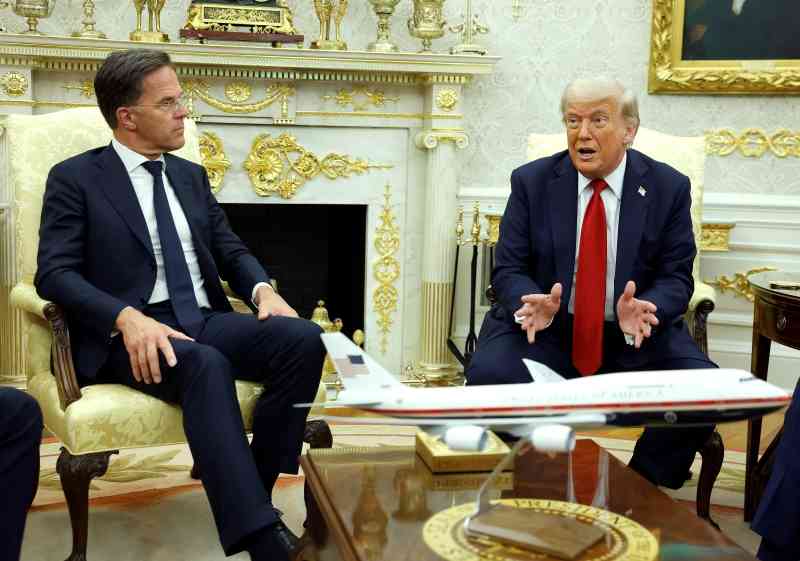Trump Threatens 100% Secondary Tariffs on Russia's Trade Partners if No Ukraine Peace Deal in 50 Days

President Donald Trump on Monday issued a sharp new threat aimed at ending the war in Ukraine: a 50-day deadline for Russian President Vladimir Putin to agree to a peace deal — or face sweeping “secondary tariffs” of around 100% on nations trading with Moscow.
“We’re very, very unhappy with them, and we’re going to be doing very severe tariffs, if you don’t have a deal in 50 days, tariffs at about 100%, they call them secondary tariffs,” Trump said from the White House while meeting with NATO’s secretary general, Mark Rutte.
Trump added that he was “disappointed” in Putin, saying he had expected a deal months ago.
Register for Tekedia Mini-MBA edition 18 (Sep 15 – Dec 6, 2025) today for early bird discounts. Do annual for access to Blucera.com.
Tekedia AI in Business Masterclass opens registrations.
Join Tekedia Capital Syndicate and co-invest in great global startups.
Register to become a better CEO or Director with Tekedia CEO & Director Program.
“So based on that, we’re going to be doing secondary tariffs,” Trump added.
But the threat, which would impose stiff levies on countries and companies doing business with Russia — particularly in energy and raw materials — is drawing more skepticism than surprise. Critics say the move may be another example of Trump’s pattern of tough talk with limited follow-through, especially when dealing with Putin.
The president has long been criticized for his unusually conciliatory posture toward Putin. Unlike his predecessor Joe Biden, whose administration took a confrontational approach by rallying NATO, arming Ukraine heavily, and implementing sweeping financial sanctions on Moscow, Trump has consistently opted for persuasion.
He has claimed repeatedly — without providing details — that he could end the war within 24 hours by “sitting both sides down” and brokering a deal. That posture, and his refusal to sharply criticize Putin even after the 2022 invasion of Ukraine, earned Trump a reputation for being lenient on Russia.
Monday’s tariff threat, while bolder than usual, is seen by some as hollow. Others point to Trump’s previous praise for Putin’s leadership style and his skepticism toward NATO as further signs that the tariff warning may be more political theater than policy.
If implemented, the so-called secondary tariffs would target nations that continue buying Russian exports — especially oil, gas, grain, and industrial commodities. Among those potentially in the crosshairs: China, India, Brazil, Turkiye, and others who have maintained or even expanded trade with Moscow despite Western sanctions.
That move could create major geopolitical friction. Countries like India and China are now deeply entwined with Russia’s energy and trade networks. Any attempt to penalize them could risk a global trade clash — and possibly backfire on the U.S. and its own supply chains.
Beyond doubts about Trump’s willingness to impose the tariffs, there is another lingering question: Would it even matter?
Russia has, for the most part, weathered the storm of past Western sanctions and tariffs. It has reoriented its energy exports to Asia, rerouted trade through third-party nations, and leaned on massive foreign reserves to stabilize its economy. Even with billions in frozen assets and restricted access to Western tech, Moscow’s war effort has continued largely unabated.
Analysts warn that another round of tariffs — even with a 100% rate — may do little to force a policy change in the Kremlin.
Former CIA officer Dan Hoffman said on Fox News that the massive strike on Kyiv right after Putin’s call with Trump was no coincidence. Putin wants to show strength.
Trump did not specify which products would be targeted or how the tariffs would be enforced. Nor was there clarity on whether he would seek multilateral support from U.S. allies or act unilaterally. Without those details, analysts say the threat looks more like posturing than actionable foreign policy.
Still, it signals Trump’s growing frustration with the conflict. In March, he floated a similar warning, saying he would impose secondary tariffs on all Russian oil if no peace deal was reached and if he deemed Russia responsible.
“We get a lot of bullshit thrown at us by Putin. He’s very nice all the time, but it turns out to be meaningless,” he said earlier this month.
Although this time, Trump he has added a timeline — 50 days — setting up a potential moment of reckoning in early September, his record of backing down from implementing threats, as notable in his global tariff policies, has earned him the TACO (Trump always chicken out) nickname.
Against this backdrop, Trump’s remarks are currently generating more questions than confidence. And for Putin — who has defied NATO, Western sanctions, and U.S. tariffs for over two years — it is unclear whether even this latest threat will move the needle.
You may also like...
Diddy's Legal Troubles & Racketeering Trial

Music mogul Sean 'Diddy' Combs was acquitted of sex trafficking and racketeering charges but convicted on transportation...
Thomas Partey Faces Rape & Sexual Assault Charges

Former Arsenal midfielder Thomas Partey has been formally charged with multiple counts of rape and sexual assault by UK ...
Nigeria Universities Changes Admission Policies

JAMB has clarified its admission policies, rectifying a student's status, reiterating the necessity of its Central Admis...
Ghana's Economic Reforms & Gold Sector Initiatives

Ghana is undertaking a comprehensive economic overhaul with President John Dramani Mahama's 24-Hour Economy and Accelera...
WAFCON 2024 African Women's Football Tournament

The 2024 Women's Africa Cup of Nations opened with thrilling matches, seeing Nigeria's Super Falcons secure a dominant 3...
Emergence & Dynamics of Nigeria's ADC Coalition

A new opposition coalition, led by the African Democratic Congress (ADC), is emerging to challenge President Bola Ahmed ...
Demise of Olubadan of Ibadanland
Oba Owolabi Olakulehin, the 43rd Olubadan of Ibadanland, has died at 90, concluding a life of distinguished service in t...
Death of Nigerian Goalkeeping Legend Peter Rufai

Nigerian football mourns the death of legendary Super Eagles goalkeeper Peter Rufai, who passed away at 61. Known as 'Do...





